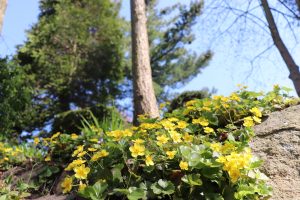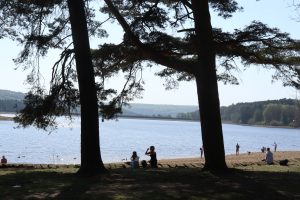My collection of photos were taken with the theme of ‘nature’ in mind. I decided on this theme because it meant I could go to a variety of places such as reservoirs and parks to find the best-suited images, including flowers, trees, and water.
Reflection –

Shallow depth of field –

Silhouette –

Long exposure –

Frame within a frame –

For my stills photography task, I decided to run with the theme of ‘nature’ because I thought this would give me a variety of ways to go about the task, when it came to location and photo opportunities. This meant I got photos of various flowers, trees, animals and water. This was an individual task which meant I had to use my creativity and camera skills to get the best images I could that fit the brief: five photos consisting of a frame within a frame, a silhouette, a reflection, a shallow depth of field and a long exposure shot.
An example of the health and safety precautions I took was the fact that I was taking photos of/near water. I made sure that I didn’t go to close to the water with the equipment to avoid water damage. I also made sure I was aware of my surrounding when taking photos. “You might bump into someone while walking backwards trying to grab an interview.”(Chapman, J and Kinsey M (2009). Broadcast Journalism A critical introduction.)
I was trying to achieve a collection of photos that would come under the theme of nature. When it comes to the audience for this task, the photos could be aimed at anyone who enjoys the outdoors or simply the beautiful nature to be seen in the local area. “The audience has long been said to be active in the sense that people bring their own interpretations to the media output.” (Harcup, T (2015). Journalism Principals and Practice.)
The only problems I ran into with this task is getting the camera settings right to get the long exposure shot. To get over this problem, I went through the settings individually and had a look at PowerPoints from previous workshops as well as using my camera skills training to sort out this issue.
Bibliography:
Chapman, J and Kinsey M (2009). Broadcast Journalism A critical introduction. Oxon: Routledge. p88-89.
Harcup, T (2015). Journalism Principals and Practice. 3rd ed. London: Sage. p220.



